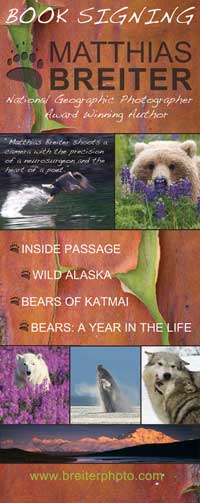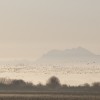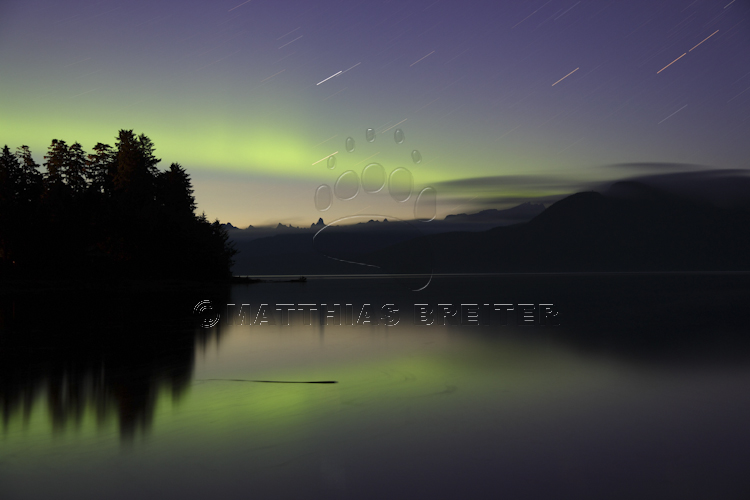
Bald Eagles at Anan Creek
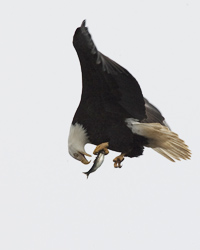
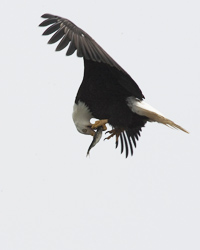
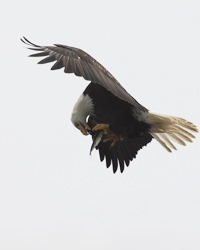
In winter and early spring, food sources along the Inside Passage are highly localized. In March, herring spawns. In vast schools the animals enter bays to deposit their eggs on kelp and eel grass. Humpback whales dive through clouds of fish, mouth agape. Above the water, gulls circle. Bald eagles wait in the trees above tidal narrows where currents pack the fish tight and push them towards the surface. In close succession, eagle after eagle swoops down, points his feet forward just before making contact with the water and clamps his talons around the writhing prey. There can be as many as several thousand eagles in a large bay. With competition high, many eagles devour their catch midair to avoid harassment by other birds and then dive down again to get seconds.
In early summer, Anan Creek is one of the best places in Alaska to view bald eagles. Hundreds perch in the tall Sitka spruce along the shoreline. At low tide, dozens sit on the mud flats in Anan Lagoon at the mouth of the creek. Generally bald eagles are spread out across the Panhandle during the warm months of the year. There are so many fish runs, so much salmon to be had, there is no reason to congregate on any specific stream. However, the Anan is an early productive run in the region and eagles flock in. By August, their lines have thinned again. Although salmon are still migrating strong up Anan Creek, there are other places where food is caught easily, and no reason remains to compete over the same resource.
Taken from Matthias’s award-winning book Inside Passage.
The Humpback Whale
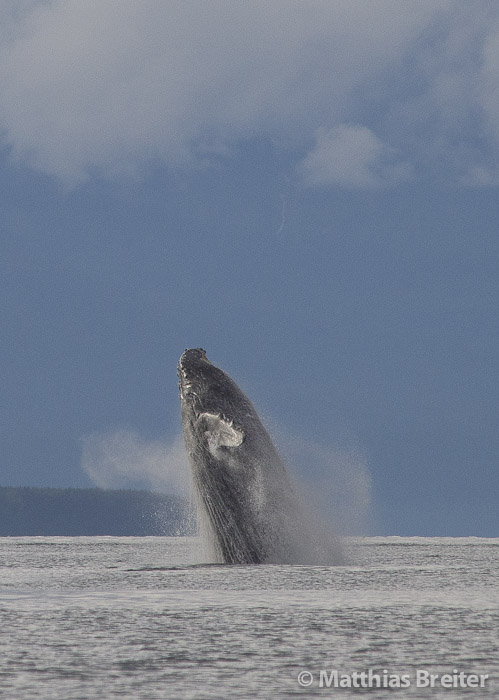 Forty tons of meat and blubber erupt out of the calm waters along Lynn Canal. The entire body of an adult humpback whale emerges from the sea, twists around its core and falls back into the ocean. Icy Strait and Lynn Canal are known for their high concentrations of humpback whales during the summer months. Why the animals breach is the source of much speculation. Some feel that it may help the animal to dislodge barnacles from their skin. It also could be dominance behavior, or it may simply be an expression of joy.
Forty tons of meat and blubber erupt out of the calm waters along Lynn Canal. The entire body of an adult humpback whale emerges from the sea, twists around its core and falls back into the ocean. Icy Strait and Lynn Canal are known for their high concentrations of humpback whales during the summer months. Why the animals breach is the source of much speculation. Some feel that it may help the animal to dislodge barnacles from their skin. It also could be dominance behavior, or it may simply be an expression of joy.
Point Adolphus along Ice Strait, opposite the entrance to Glacier Bay, is possibly the single best known place to observe humpback whales. The strong current swirling around the promontory concentrates small feed fish, and whales hang around this stretch of water all summer long, never moving far. At slack tide, when the current is at its weakest, the animals seem to indulge themselves with play such as tail-slapping and lob-tailing. The animals are known to repeat this performance over and over. At times the same behavior is used to warn other whales, as when the fluke hits the water, the loud resonant sound can be heard for miles.
As whale populations grow, the number of whale carcasses that are discovered along the beaches is increasing too. Some animals die in collisions with ships. There are cases when whales get entangled in nets. Most fatalities, however, are likely due to natural causes. For scavenging birds and land-dwelling carnivores, a beached whale is a food bonanza that can last for several months, as long as the tide doesn’t take back its gift. The rich resource will attract grizzlies from far away. Mostly, it is the large boars that feed on the carcass. Sows with cubs stay their distance for sake of safety, and only come in when the males have had their fill and retreated for a siesta.
This is an excerpt from Matthias Breiter’s award-winning book, Inside Passage.
Book Signing 2011
A big thank you to everyone who made it out to the book signing in Juneau, Alaska! You were lots of fun to meet and produced a great turn-out. Matthias is currently doing another signing in Denali National Park until Wednesday (July 13th).
Book Signing Schedule for Summer 2011:
July 11- 13: Denali National Park
July 17th: Alaska Sealife Center
July 20-22: Mendenhall Visitor Center in Juneau, Alaska
Dates to be announced:
Sitka
Ketchikan
Vancouver
